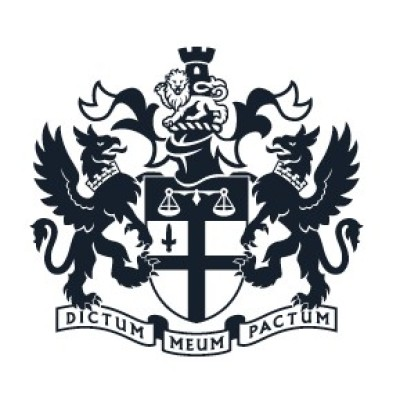Global Markets in Turmoil: The Ripple Effect of Trump's Tariff Threats
April 1, 2025, 4:19 pm

Location: United Kingdom, England, City of London
Employees: 1001-5000
Founded date: 1801
The world of finance is a delicate ecosystem. A single tremor can send shockwaves through markets, and right now, the tremors are coming from the White House. As President Trump prepares to unveil a new wave of tariffs, investors are bracing for impact. The so-called ‘Liberation Day’ on April 2 is looming, and with it, a storm of uncertainty.
The latest news is a bitter pill for investors. Trump’s announcement of a 25 percent tariff on all automotive imports has ignited fears of a global trade war. This isn’t just a U.S. problem; it’s a worldwide concern. Markets are reacting like a cornered animal, lashing out in panic. The FTSE 100 closed down nearly one percent, while the FTSE 250 fell almost two percent. The numbers tell a story of retreat, as banks and commodity producers dragged the indices down.
In the U.S., the Dow Jones opened with a grim face, sliding 300 points almost immediately. The S&P 500 followed suit, sinking over 1.5 percent. The tech-heavy Nasdaq took the hardest hit, plummeting more than two percent. It’s a cascade of red across the screens, a visual representation of investor anxiety.
The root of this turmoil lies in Trump’s aggressive trade policies. His rhetoric has been clear: no country will escape his tariffs. This declaration has left investors scrambling for cover. The fear is palpable. Goldman Sachs has warned that these trade escalations could stunt U.S. economic growth. Economists are now predicting multiple interest rate cuts this year, a sign of the storm brewing on the horizon.
Inflation is another beast lurking in the shadows. Goldman Sachs forecasts it could reach 3.5 percent, a significant leap from the Federal Reserve’s target of two percent. This inflationary pressure could further complicate the economic landscape, leaving investors in a precarious position.
The market's reaction is a testament to the uncertainty that looms over global trade. The metals and miners index dropped four percent, hitting its lowest point since February 2021. Major players like Anglo American and Rio Tinto saw their shares tumble by nearly five percent. Glencore wasn’t spared either, losing 4.2 percent. These losses are not just numbers; they represent real fears about the future of trade and economic stability.
In Europe, the mood is equally grim. Germany’s DAX and France’s CAC 40 both fell over 1.5 percent. Amsterdam’s AEX wasn’t far behind, dropping nearly one percent. The European markets are feeling the heat from across the Atlantic, caught in the crossfire of Trump’s trade war.
The reaction isn’t limited to stock indices. Commodities are also feeling the pressure. Gold prices have surged, hitting record highs as investors flock to the safety of the yellow metal. Prices topped $3,100 an ounce, a clear sign that confidence in traditional markets is waning. When uncertainty reigns, gold shines.
The implications of these tariffs extend beyond immediate market reactions. They raise questions about the future of international trade. Will countries retaliate? How will this affect global supply chains? The answers remain murky, but the potential for escalation is high.
In the U.S., the automotive industry is bracing for impact. Trump’s tariffs could lead to higher car prices, a reality he seems unconcerned about. His belief that consumers will pivot to American-made cars reflects a simplistic view of a complex market. The automotive sector is interconnected with global supply chains, and disruptions could have far-reaching consequences.
The financial analysts are sounding alarms. The market’s current trajectory suggests a rough road ahead. Investors are left wondering if they should brace for a recession. The uncertainty is like a thick fog, obscuring the path forward.
As the clock ticks down to ‘Liberation Day,’ the stakes are high. Investors are holding their breath, waiting for the next move from the White House. The fear of a global trade war looms large, casting a shadow over markets worldwide.
In this climate, the old adage rings true: when the U.S. sneezes, the world catches a cold. The interconnectedness of global markets means that Trump’s tariffs will have repercussions far beyond American borders.
The coming days will be crucial. Will the markets stabilize, or will they continue to spiral? The answers lie in the hands of policymakers and the unpredictable nature of global trade. For now, investors are left to navigate a turbulent sea, hoping for calmer waters ahead.
In conclusion, the current market turmoil is a stark reminder of the fragility of economic stability. As Trump’s tariffs loom, the world watches with bated breath. The future is uncertain, and the stakes have never been higher. Investors must prepare for whatever comes next, armed with the knowledge that in the world of finance, change is the only constant.
The latest news is a bitter pill for investors. Trump’s announcement of a 25 percent tariff on all automotive imports has ignited fears of a global trade war. This isn’t just a U.S. problem; it’s a worldwide concern. Markets are reacting like a cornered animal, lashing out in panic. The FTSE 100 closed down nearly one percent, while the FTSE 250 fell almost two percent. The numbers tell a story of retreat, as banks and commodity producers dragged the indices down.
In the U.S., the Dow Jones opened with a grim face, sliding 300 points almost immediately. The S&P 500 followed suit, sinking over 1.5 percent. The tech-heavy Nasdaq took the hardest hit, plummeting more than two percent. It’s a cascade of red across the screens, a visual representation of investor anxiety.
The root of this turmoil lies in Trump’s aggressive trade policies. His rhetoric has been clear: no country will escape his tariffs. This declaration has left investors scrambling for cover. The fear is palpable. Goldman Sachs has warned that these trade escalations could stunt U.S. economic growth. Economists are now predicting multiple interest rate cuts this year, a sign of the storm brewing on the horizon.
Inflation is another beast lurking in the shadows. Goldman Sachs forecasts it could reach 3.5 percent, a significant leap from the Federal Reserve’s target of two percent. This inflationary pressure could further complicate the economic landscape, leaving investors in a precarious position.
The market's reaction is a testament to the uncertainty that looms over global trade. The metals and miners index dropped four percent, hitting its lowest point since February 2021. Major players like Anglo American and Rio Tinto saw their shares tumble by nearly five percent. Glencore wasn’t spared either, losing 4.2 percent. These losses are not just numbers; they represent real fears about the future of trade and economic stability.
In Europe, the mood is equally grim. Germany’s DAX and France’s CAC 40 both fell over 1.5 percent. Amsterdam’s AEX wasn’t far behind, dropping nearly one percent. The European markets are feeling the heat from across the Atlantic, caught in the crossfire of Trump’s trade war.
The reaction isn’t limited to stock indices. Commodities are also feeling the pressure. Gold prices have surged, hitting record highs as investors flock to the safety of the yellow metal. Prices topped $3,100 an ounce, a clear sign that confidence in traditional markets is waning. When uncertainty reigns, gold shines.
The implications of these tariffs extend beyond immediate market reactions. They raise questions about the future of international trade. Will countries retaliate? How will this affect global supply chains? The answers remain murky, but the potential for escalation is high.
In the U.S., the automotive industry is bracing for impact. Trump’s tariffs could lead to higher car prices, a reality he seems unconcerned about. His belief that consumers will pivot to American-made cars reflects a simplistic view of a complex market. The automotive sector is interconnected with global supply chains, and disruptions could have far-reaching consequences.
The financial analysts are sounding alarms. The market’s current trajectory suggests a rough road ahead. Investors are left wondering if they should brace for a recession. The uncertainty is like a thick fog, obscuring the path forward.
As the clock ticks down to ‘Liberation Day,’ the stakes are high. Investors are holding their breath, waiting for the next move from the White House. The fear of a global trade war looms large, casting a shadow over markets worldwide.
In this climate, the old adage rings true: when the U.S. sneezes, the world catches a cold. The interconnectedness of global markets means that Trump’s tariffs will have repercussions far beyond American borders.
The coming days will be crucial. Will the markets stabilize, or will they continue to spiral? The answers lie in the hands of policymakers and the unpredictable nature of global trade. For now, investors are left to navigate a turbulent sea, hoping for calmer waters ahead.
In conclusion, the current market turmoil is a stark reminder of the fragility of economic stability. As Trump’s tariffs loom, the world watches with bated breath. The future is uncertain, and the stakes have never been higher. Investors must prepare for whatever comes next, armed with the knowledge that in the world of finance, change is the only constant.
